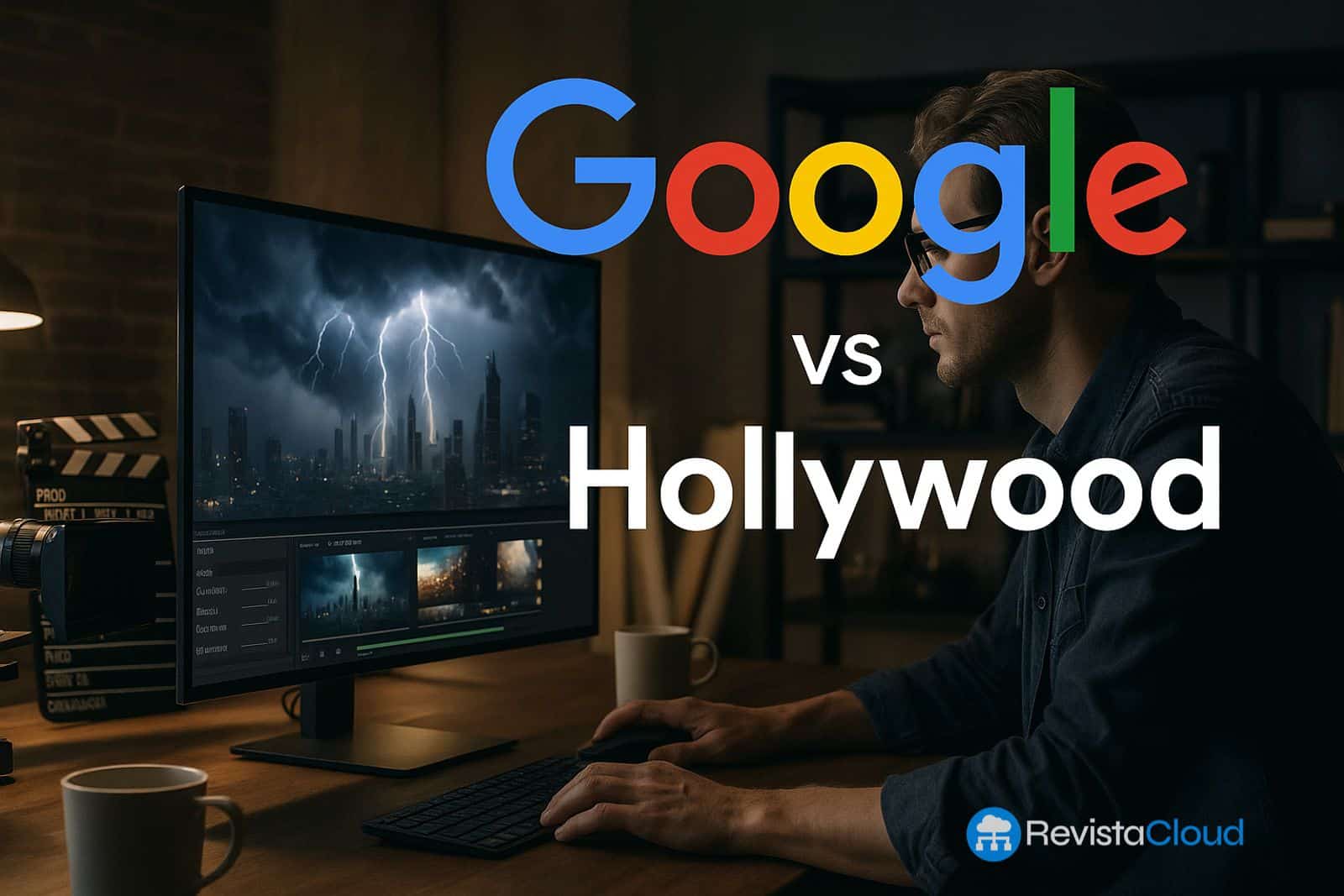The new Google tool allows for the generation of cinematic scenes from text, but it still relies on advanced GPUs and powerful equipment. Hollywood watches with concern… and hardware manufacturers celebrate the moment.
Google has shaken up the technological and audiovisual landscape with the official presentation of Google Flow, its new video creation tool based on generative artificial intelligence. Announced at Google I/O 2025, Flow enables the generation of cinematic-quality clips from natural language descriptions. However, despite the astonishing potential of this technology, we are still far from hardware-free filmmaking: the process still requires state-of-the-art GPUs and high-performance workstations to operate.
What is Google Flow?
Flow combines the best of Google’s AI ecosystem:
- Veo 3: the highest quality video generation model developed by the company.
- Image 4: for hyper-realistic images.
- Gemini: serving as the core for processing and understanding natural language.
Thanks to this combination, any user can input a text like “a dystopian city under the rain” and receive an automatically generated video clip, with controls over camera angles, style, and transitions. All this is achieved without physical cameras, actors, or shooting… but with extensive computing power behind it.
Hardware Is Not Optional Yet
While Flow’s interface may seem magical and accessible, the reality is that behind each generated scene lies intensive processing. Google’s models require:
- Specific GPUs like Google’s TPUs or NVIDIA’s A100/H100.
- High-performance processors and ultra-fast storage.
- Cloud infrastructure or powerful local workstations for tasks such as rendering, inference, and editing.
As a result, access to Flow is currently limited to subscribers of the Google AI Pro and AI Ultra plans in the United States. And although the goal is to democratize audiovisual creation, the entry point remains high-end hardware.
Hollywood Awaits; GPU Manufacturers Are Eager… but for Different Reasons
The possibility of generating entire films using AI without traditional production methods has raised alarm in Hollywood. Actors, screenwriters, and directors fear for their creative roles. On the flip side, the hardware industry sees a golden opportunity.
Tools like Flow or Sora (OpenAI), Runway, or Pika not only democratize creativity but also consolidate the dependence of AI on specialized hardware. Computing demands grow in parallel with the quality of the outcomes, resulting in a strong demand for manufacturers like NVIDIA, AMD, Intel, or Google Cloud.
In other words: creating films with AI is not yet possible from a basic laptop. The audiovisual revolution relies on every teraflop available.
Filmmaking Without Shooting, but With Engineering
Google Flow does not eliminate all intermediaries. While a camera and set are no longer necessary, the new creative process demands prompt engineers, editors, content directors, and AI experts capable of designing scenes, combining clips, adjusting styles, and structuring narratives. Furthermore, workflows still involve professional editing and post-production tools.
Therefore, the profile of the “AI filmmaker” will be hybrid: creative, technical, and with one foot in hardware.
The Future of Cinema or a GPU Lab?
Google Flow is undoubtedly an impressive leap in video generation. It democratizes, accelerates, and redefines the creative process. But it also raises new realities:
- How is the authorship of an AI-generated film regulated?
- What role will human creatives have against algorithms?
- Can independent studios compete without access to the necessary hardware?
What is clear is that hardware has not disappeared: it has simply changed venues, moving from film cameras to server racks.
📌 Google Flow could be the next revolution in the seventh art. But at least for now, without a GPU, there’s no film.



